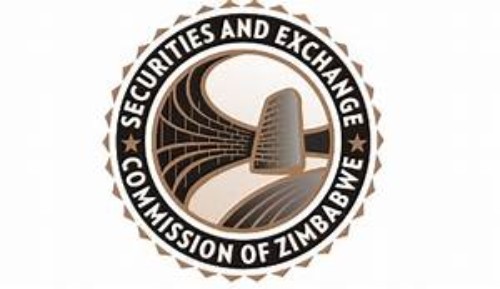The secret to good project management is good scope management. But how many realise that effective scope management is really all about negotiation? In this week's newsletter we unpack the skill of project scope negotiation and how this relates to the Project Management Body of Knowledge's (PMBOK) five stages of project management.
Negotiating project scope
When you become a project manager, you soon learn that consistent delivery depends on you following some simple but crucial rules. The basic mantra, 'define your scope' is one that no project manager can live without. It is the difference between a triumphant end-of-project party and a nightmarish last-minute, fever-pitch attempt at a save, lest you incite the wrath of an unsatisfied customer.
It is therefore a good idea to get the art of scope negotiation down. This brief guideline will show you how.
The PMBOK identifies five activities involved in scope management:
Collect requirements
This begins with asking yourself some important questions. What do you know about the project you are about to embark on? What do you know about what the various stakeholders (everyone with a potential interest in the project) want? In this way, the characteristics of a project solution are defined and project requirements slowly begin to emerge.
Once you have established these basic requirements and collected them in a requirements document and presentation, you can obtain input from your stakeholders.
The funder, followed closely by the client, is the most important stakeholder. If the funder is the client, then they are doubly important.
The ideas of lesser stakeholders are also important. Consensus across the board is essential for a successful project. What's more, although these stakeholders may not always have a direct impact on the project, they can add value in their own ways. They may offer unique and valuable insights into how to approach the project, the project's particular delivery challenges, and even (to some extent) the definition of the item to be delivered.
Once the requirements are clear and you have buy-in from all stakeholders, the client can sign off the requirements document. This may not be required in smaller projects, but it is essential if you are running a more formal project.
Define scope
With your requirements clear, you are now ready to define the scope. The scope is a clear definition of the deliverables that indicates by when, by whom, and how the item is to be delivered.
The relevant document at this stage is called the project scope statement, which summarises the base agreement between all stakeholders, as well as the project's deliverables. The project scope statement includes the project objectives; product description and project requirements, constraints and assumptions, and an outline of risks relating to the project scope. This document should also include the acceptance criteria for the end-product.
Once again, some negotiation may be required before consensus can be reached.
Boost your career with a project management skills course!
Regenesys offers a variety of Project Management courses to help you take an idea from implementation through to completion.
Our range of world-class contact or e-learning Project Management courses, available at various levels, will allow you to select the right programme to suit your needs.
Below is an example scope statement. You will see that it includes the project objectives, deliverables, milestones, technical requirements, limits, exclusions and customer review. Note how the example shows that the scope statement is really a mini project definition and that, while certain details are absent, the project scope is very nearly a complete definition of what is going to happen in the project.
Project objective
Construct a high-quality, customised house within five months at a cost not exceeding R350 000.
Deliverables
A 500m2, two and a half-bathroom, three-bedroom, finished home.
A finished, insulated and plaster-boarded garage.
Kitchen appliances to include refrigerator, oven, microwave and dishwasher.
A high-efficiency gas furnace with programmable thermostat.
Milestones
Permits approved - 5 May.
Foundation poured - 14 May.
Dry in, framing, sheathing, plumbing, electrical, and mechanical inspections passed - 25 July.
Final inspection - 7 August.
Technical requirements
The home must meet local building codes.
All windows and doors must pass energy efficiency ratings.
The garage must accommodate two large cars as well as a spacious work area.
Limits and exclusions
The home will be built to the specifications and design of the original blueprints provided by the customer.
The owner will be responsible for landscaping.
The clothes washer is not included in the kitchen appliances to be supplied.
Air conditioning is not included but pre-wiring is included.
The contractor reserves the right to subcontract services.
The contractor is responsible for subcontracted work.
Site work can only happen Mondays through Fridays, 08:00 to 18:00.
Customer review
The plans will be signed off by John Smith.
Final approvals of deliverables will be by John and Jane Smith.
The project allows for at least two rounds of snag identification and rectification.
A clear scope that everyone has agreed upon makes it much easier to start with scope management.
Create a work breakdown structure
A work breakdown structure breaks down the project scope into smaller deliverables and arranges all activities into an appropriate sequence.
Verify scope
Control scope
The verification of scope is a critical activity that ensures that projects remain focused on deliverables and that the project team documents any change in requirements as a change either in plan or in scope.
The control of scope process requires documentation of the scope and scope changes, and the delivery or achievement of scope to be clearly defined.
For the successful project manager, there are critical guidelines to negotiating the project scope.
Set the scene. Research shows that the opening of a meeting determines its outcome. Start a meeting with a reflection on why you are all there. If the other party starts aggressively, use presentations and other mechanisms to remind people why you are engaged in this activity and that you all share a common end goal.
Listen first, so that you understand where the other party is coming from. This will make it easier to explain your position in terms that everyone can understand. You will then be able to offer suggestions or solutions when the other party's ideas seem unclear.
Explain the 'why' before the 'what'. When attempting to persuade people to see things your way, explain the reasons for your request; i.e. the value that you think there would be in granting it. Present your case before you summarise. You should only give away your position once the other stakeholders are convinced of its value, whatever it may be. By unfolding your side in this way, you get people on board slowly - gently, without making them feel pressured or threatened. You are giving them the chance to agree with each little observation you make, before they even know that you want anything at all. If you ask someone for what you want first, and then explain why afterwards, you will lose a lot of ground. If, however, you get them on your side first, they will actually want to grant your request before you even make it.
This means getting them to like you, which will happen if you show benefits and deliver on promises. A customer who likes you is very good for negotiations. Making a positive first impression and maintaining it by being on time, professional and well-spoken will prove of great value down the line. Always prepare for meetings and make sure that you review and deliver on the things for which you accept responsibility.
Never make it personal. Always focus on what is good for the project. Where personal considerations enter into the discussion, de-personalise it with facts and processes that lead to objective results.
Also, be sure to think about what you want ahead of time. Know your goal and the minimum you will accept.
Base your ideas on facts. Do not use arbitrary criteria to phrase requests. If you need data, come to an agreement to collect it and to come back to specific decisions.
Talk to people who count. Understand who influences the client's decision.
Be confident and ask for what you want. Do not expect your needs to be met magically in the course of the project. Asking directly and immediately will get you it a lot further, faster.
Do not oversell - learn to accept that you have to be quiet sometimes. After you have presented your side, all of your reasons, and then your request, withdraw slightly, giving your audience time to process what you have said. Your silence, in this situation, is a sign of respect. Many negotiators hinder positive outcomes because they do not feel comfortable with silence. Do not interrupt other people's thoughts. If it is quiet for a while, it means that you have stimulated thinking - it means that people value what you have said enough to consider it.
Remember that you may be winning at this point. To keep prattling on is to risk having the tide turn against you. Do not labour your point. If you have the result you are looking for, without showing all of your cards, keep the rest to yourself until they are needed. Acknowledge what you have received rather than pressing on after you have won.
Be creative. To find real solutions to problems, you must think creatively about all the aspects of the project. If you do this, you will quickly come to realise that there is often more than one solution to a problem. Finding alternative solutions can change a heavy negotiation into an inspiring team effort.
Seek a win-win outcome. Consider what it will take for the other side to be satisfied and then try to identify a way to ensure your own satisfaction under the same circumstances.
If you have presented all of your arguments and you do not have what you want, it may be time to consider walking away. Not all requirements can be satisfied and, while 'giving up' may feel embarrassing at the time, it will save your reputation later. In this case, it is very important for a project manager to fully understand and respect what the client really wants.
Conclusion
Scope is the key to good project management. A good scope definition can be the difference between success and failure. For you to become better at scoping, it is important that you understand the whole extent of a project and hone your negotiation skills.
- Regenesys Business School
 Concern over Masvingo black market
Concern over Masvingo black market  Kenya declares three days of mourning for Mugabe
Kenya declares three days of mourning for Mugabe  UK's Boris Johnson quits over Brexit stretegy
UK's Boris Johnson quits over Brexit stretegy  SecZim licences VFEX
SecZim licences VFEX  Zimbabwe abandons debt relief initiative
Zimbabwe abandons debt relief initiative  European Investment Bank warms up to Zimbabwe
European Investment Bank warms up to Zimbabwe  Young Investment Professional (YIP) Graduate Programme 2019
Young Investment Professional (YIP) Graduate Programme 2019 











 Young Investment Professional (YIP) Graduate Programme 2019
Young Investment Professional (YIP) Graduate Programme 2019
Editor's Pick